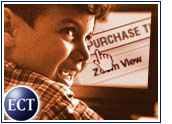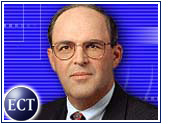On my father’s 80th birthday, he announced that he felt he had outlived himself.
“I don’t know a dot-com from an intercom,” he said. “The whole computer thing has just left me in the dust.”
I couldn’t help thinking how prevalent that sense of alienation must be among seniors, and how typical it is of us younger types to perpetuate that feeling. And then I started looking at e-shopping sites, wondering how the senior crowd must perceive point and click shopping.
Seniors are knocking on the door, and e-tail is not answering.
Hip Hop vs. Big Band
A quick look at some of the most popular sites makes it very clear that seniors are not exactly being courted by e-tailers. CDNow features Madonna, Britney Spears and the Dixie Chicks on its home page, but finding Rosemary Clooney, Lena Horne and Louis Armstrong takes some digging.
Amazon.com touts Toys ‘R’ Us, DVDs and zShops. Plug in the keyword “seniors” and immediately you’re drawn into a product world of nursing home guides, assisted living and Medicare.
I’m stumped by this instant stereotyping of seniors. Note to e-tailers: Many seniors have sizeable incomes or nest eggs and like to travel, buy clothes, exercise, dine out, connect with other seniors who have similar interests, and even date. Yes,date. Surely there are books and other products out there that appeal to the varied interests of senior shoppers.
Reinvent the Wheel?
Is it possible that we are missing out on a major consumer segment because the decision makers on the e-commerce marketing teams are mostly twenty-somethings?
Is it possible we need to take a lead from the U.S. Small Business Administration, the agency that maintains something called the Service Corps of Retired Executives? These are retired seniors who work in the offline world, bringing their decades of expertise from various fields to the forefront of contemporary American commerce.
For example, Macy’s hasn’t hung around 34th Street in New York City through the efforts of people who don’t know a P & L statement from an FAQ. Macy’s success is attributed to people who have made entire careers out of retailing, refined it to a commercial art form and produced a respectable bottom line for decades.
I wonder if any of those people have been invited to design, manage or market Macys.com. Something tells me the answer is no.
Net Gains?
I have a feeling that we new media types would realize a dual accomplishment if we’d aggressively open the e-shopping door to our elders.
First, we’d benefit from their experience and save ourselves a few steps, particularly in learning how to market and sell products. Second, we’d most likely be gratified by the spending power and good word of mouth from the over-50 crowd. (The very fact that we even consider anyone just over 50 a senior is baffling.)
A recent statistic released by the Society for Consumer Research showed that 18 percent of Web surfers are over 50. That’s up from 3 percent just five years ago. Hello?
Still not convinced? Consider: A recent study by Charles Schwab, in conjunction with SeniorNet, indicated that 83 percent of seniors who access the Web spend at least 38 hours a month surfing. The same study said that more than 40 percent of adults over 50 own a computer. Just five years ago that figure was about 25 percent.
Old Ideas, New World
If even a small percentage of those seniors already online had positive, successful shopping experiences, and spread the word among others in their age group, something tells me that this year’s holiday online shopping figures would be considerably bulkier than they already are.
It’s time we updated some of our old patterns. If we want to truly forge new territory in e-commerce, we must be all-inclusive. There cannot be digital divides, cultural barriers, gender discrimination and especially ageism.
Dividing our shopping culture according to age is an old concept that doesn’t work very well in the traditional market. What makes us think that neglecting an age demographic would be beneficial in an online market still struggling to gain respectability, credibility and especially profits?
Anybody who took Marketing 101 knows the trick is not to simply ignore market segments, but rather to appeal smartly to each, and allow all consumer groups to converge when products cross barriers.
All-Inclusive E-Commerce
Let’s see some gray-haired guys on JCPenney.com, and some senior cruise packages under “Winter Travel Deals” on Expedia.com.
Most of all, let’s not make the same mistakes other media are making by excluding senior consumers. Television did it, and now has a tough time keeping a show on the air for more than 13 weeks. The movie industry did it, and now finds itself having to spend US$100 million to create blockbuster action/adventure pictures that often don’t turn a profit until they go to video.
E-tailing and older shoppers — it’s a win/win proposition.
What do you think? Let’s talk about it.![]()
Note: The opinions expressed by our columnists are their own and do not necessarily reflect the views of the E-Commerce Times or its management.





























































Social Media
See all Social Media